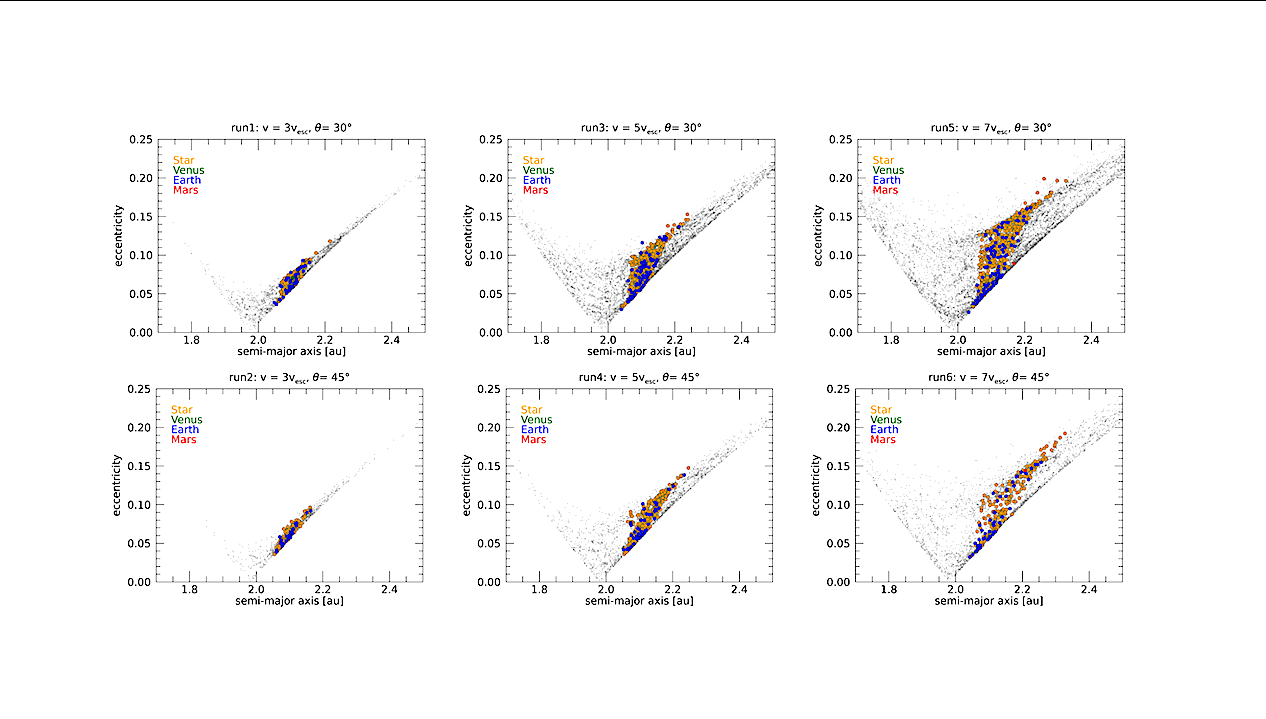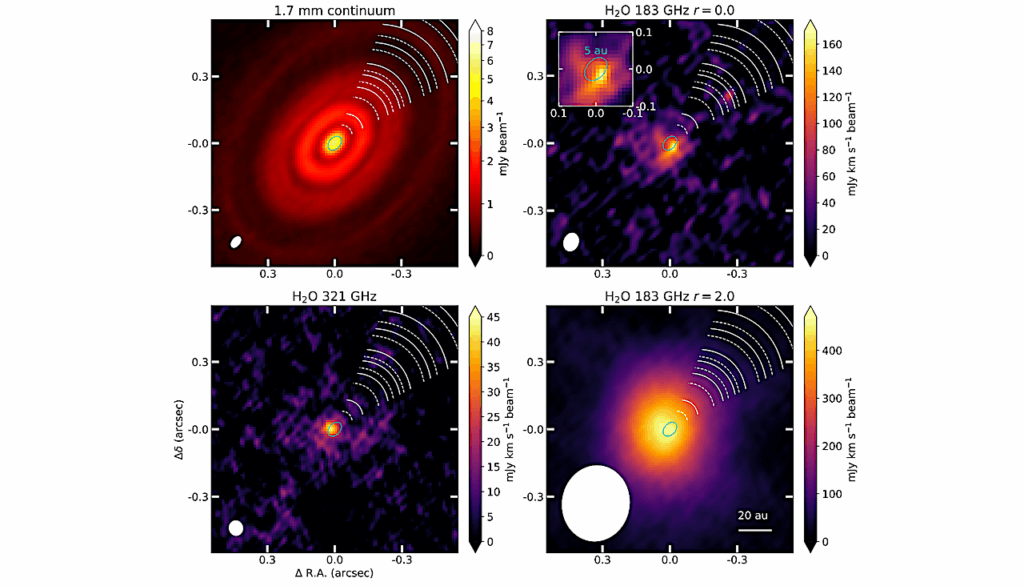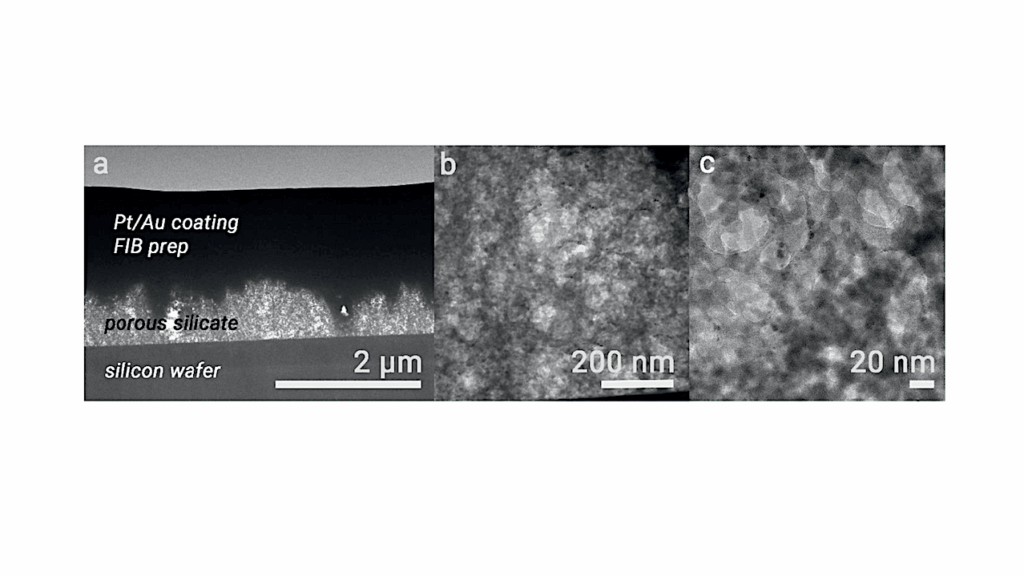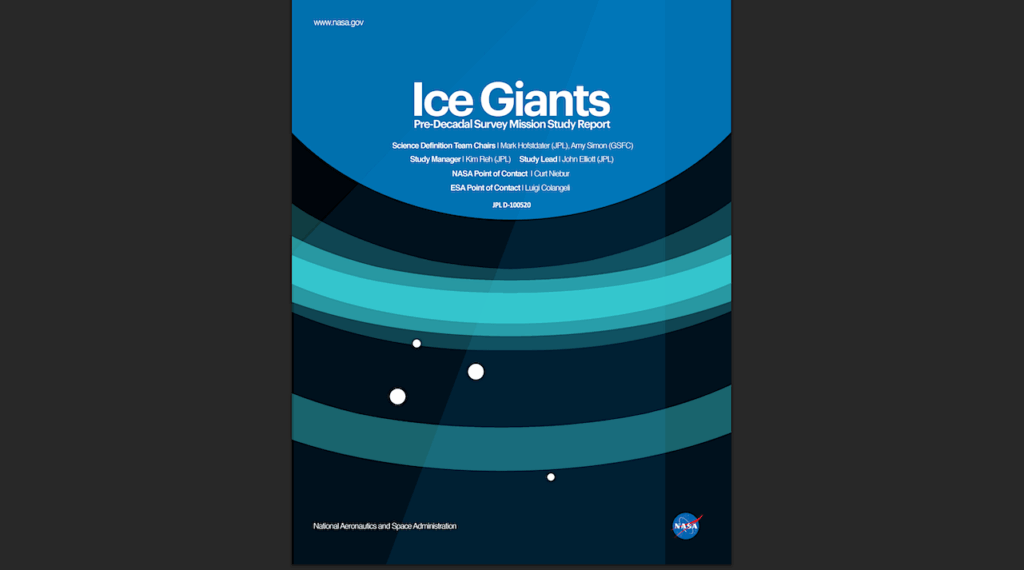The Evolution Of Collision Debris Near The ν6 Secular Resonance And Its Role In The Origin Of Terrestrial Water

This work presents novel findings that broadens our understanding of the amount of water that can be transported to Earth. The key innovation lies in the combined usage of Smoothed Particle Hydrodynamics (SPH) and N-body codes to assess the role of collision fragments in water delivery.
We also present a method for generating initial conditions that enables the projectile to impact at the designated location on the target’s surface with the specified velocity. The primary objective of this study is to simulate giant collisions between two Ceres-sized bodies by SPH near the ν6 secular resonance and follow the evolution of the ejected debris by numerical N-body code. With our method 6 different initial conditions for the collision were determined and the corresponding impacts were simulated by SPH.
Examining the orbital evolution of the debris ejected after collisions, we measured the amount of water delivered to Earth, which is broadly 0.001 ocean equivalents of water, except in one case where one large body transported 7\% oceans of water to the planet. Based on this, and taking into account the frequency of collisions, the amount of delivered water varies between 1.2 and 8.3 ocean’s worth of water, depending on the primordial disk mass. According to our results, the prevailing external pollution model effectively accounts for the assumed water content on Earth, whether it’s estimated at 1 or 10 ocean’s worth of water.
Á. Süli, E. Forgács-Dajka
Comments: 15 pages, 13 figures
Subjects: Earth and Planetary Astrophysics (astro-ph.EP)
Cite as: arXiv:2310.11851 [astro-ph.EP] (or arXiv:2310.11851v1 [astro-ph.EP] for this version)
Submission history
From: Emese Forgacs-Dajka Dr.
[v1] Wed, 18 Oct 2023 10:07:15 UTC (9,113 KB)
https://arxiv.org/abs/2310.11851
Astrobiology, Astrochemistry,








